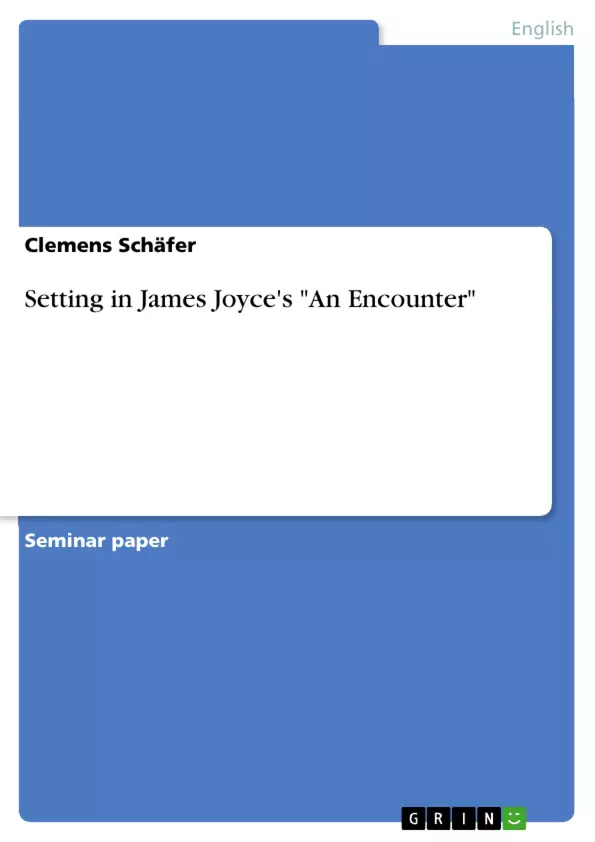The Irish born author James Joyce was one of the most important representatives of modernism (Kreutzer 2005: 171). His first literary works appeared in a collection called Dubliners. The short stories in this collection deal with the everyday life in Dublin. Joyce's intention was to reveal the situations of people being trapped and thus “betray the soul of that […] paralysis which many consider a city“ (Gilbert 1966: 55). Although one can read the short story “An Encounter” on its own, it fits into the pattern of Dubliners. This is because it portrays a boy who is looking for “doors of escape” (Joyce 1976: 20) to get out of that wearisome world.
A significant element of the artistic form of “An Encounter” is the setting because it could have more functions than only providing a context for the short story to occur in. During reading that short story, a reader may have the impression that the setting is fulfilling the additional function of supporting a certain atmosphere. The reason for that is that it seems to be important for the general mood of several episodes. Furthermore, the setting appears to be very relevant for understanding the character of the protagonist since it is the background for his action. In conclusion, the setting could perform the function of characterisation as well. Because of that, this term paper deals with the questions of whether the setting is used to contribute to a certain mood and whether it is exerted to characterise the main character of the short story.
Inhaltsverzeichnis (Table of Contents)
- Introduction
- Definition of the term setting
- The general setting in "An Encounter"
- Analysing the setting in “An Encounter” regarding its function
- Atmospheric Function
- Characterising Function
- Conclusion
Zielsetzung und Themenschwerpunkte (Objectives and Key Themes)
This paper aims to analyze the role of setting in James Joyce’s short story “An Encounter” from his collection Dubliners. It specifically explores whether the setting contributes to the story’s overall atmosphere and whether it functions in characterising the protagonist.
- The function of setting in literature
- The specific setting of "An Encounter"
- The relationship between setting and atmosphere
- The connection between setting and characterization
- The impact of setting on the overall meaning of the story
Zusammenfassung der Kapitel (Chapter Summaries)
The first chapter introduces the topic of setting in literature and the specific focus of this paper on Joyce’s “An Encounter.” It establishes the relevance of setting to the overall mood and character development within the narrative.
The second chapter defines the term setting, outlining its components including place, time, and social circumstances. It delves into the specific aspects of each element and their potential impact on the story’s context.
The third chapter examines the general setting of “An Encounter,” highlighting the significant locations mentioned in the text such as the North Strand Road, Ringsend, and Dublin. It also explores the temporal context of the story, suggesting that it takes place in the early 20th century, a time of social and political change in Ireland.
Schlüsselwörter (Keywords)
The main keywords and focus topics of this paper include setting, atmosphere, characterization, James Joyce, Dubliners, “An Encounter,” Dublin, early 20th century, Irish society, paralysis, and literary analysis.
- Quote paper
- Clemens Schäfer (Author), 2014, Setting in James Joyce's "An Encounter", Munich, GRIN Verlag, https://www.hausarbeiten.de/document/287978


